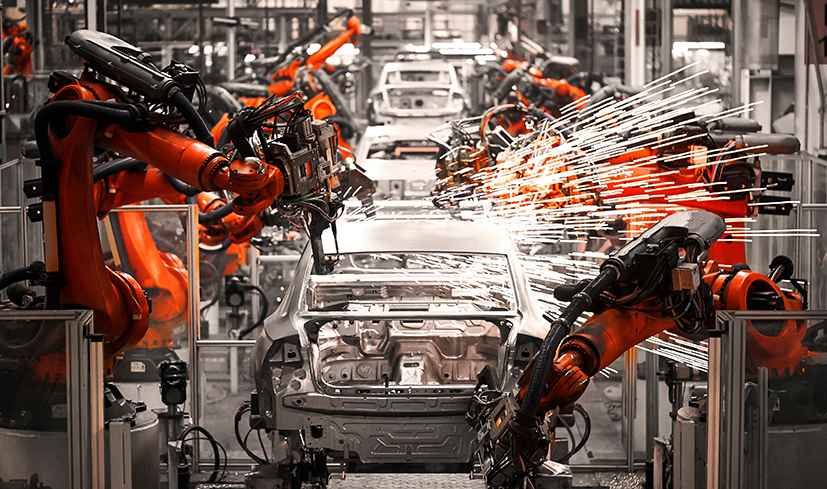Sentiment within the manufacturing sector improved in April and output expectations were the strongest for six months, according to the CBI’s latest quarterly Industrial Trends Survey.
Output volumes were broadly stable in the three months to April, following strong declines in output over the first quarter of 2024. Manufacturers expect output to rise over the next three months, with expectations the strongest since October 2023. Average cost growth remained elevated compared to historical norms, with costs also expected to increase at a strong pace in the quarter to July. Domestic and export price inflation are expected to pick up slightly in the next three months.
With demand uncertainty falling back, and concerns over the cost of financing diminishing, investment intentions for the year ahead improved relative to January. Manufacturers expect investment in buildings and plant & machinery to be stable over the year ahead, which marks a shift from the picture in January, when investment intentions sank to their weakest for three years. Moreover, spending on product & process innovation is now expected to increase over the year ahead.
Anna Leach, CBI Deputy Chief Economist, said: “Conditions facing manufacturers have taken a turn for the better, with sentiment improving and expectations for future output growth their strongest in six months.
“A softer labour market has eased concerns that skills and labour could constrain output and orders. Concerns about access to materials and components are also at their lowest since January 2020. These brighter conditions are supporting a more stable picture for investment over the year ahead.
“With the recovery still to fully pick up steam, we need to see everyone laser focused on delivering the big reforms that will help manufacturers grow and invest. Full capital expensing, with the potential to extend this to leased and rented assets, can be a game changer that unlocks the incredible power of our manufacturing sector and drives economic growth.”
The survey, based on the responses of 257 manufacturing firms, found:
- Business sentiment rose in the quarter to April, having been broadly unchanged in the three months to January (balance of +9%, from -3% in January). Export optimism for the year ahead also rose moderately (+6%, from -20%). Both sentiment indicators had shown declining optimism in all but one quarter throughout 2022-23.
- Output volumes were broadly unchanged in the quarter to April, after falling in March (balance of +3%, from -10% in the three months to March). Firms expect volumes to grow in the next three months (+11%).
- Total new orders fell in April, but at a slower pace than in the previous quarter (balance of -6%, from -13% in January). Manufacturers expect orders to return to growth over the next three months (+8%).
- Growth in average costs per unit of output rose strongly but at a slightly slower pace in the quarter to April (balance of +39%, from +43% in January; long run average of +18%). Cost growth is expected to remain elevated in the quarter to July (+42%).
- Domestic selling prices increased over the three months to April (+10%, from +2% in January). Export price inflation decelerated from January (+9% from +14%, and now the weakest since January 2021). Both domestic and export price growth is expected to pick up in the next three months (+27% and +22%, respectively).
- Investment intentions for the year ahead improved relative to January. Manufacturers expect to raise investment in product & process innovation (+15% from -5% in January, the strongest since the quarter to January 2022). Investment in training & retraining is expected to be broadly unchanged (+1% from +6%). Investment in tangibles is expected to be unchanged, including buildings (-3% from -29%) and plant & machinery (+2% from -15%), with the balances having recovered from three-year lows in January.
- The main constraint on investment was uncertainty about demand (cited by 49% of manufacturers), followed by inadequate net return (36%), and a shortage of labour (+15%, the lowest in three years). Concerns around the cost of finance have retreated from a 33-year high (excluding the pandemic period) but remain double the long run average (11% from 22%).



